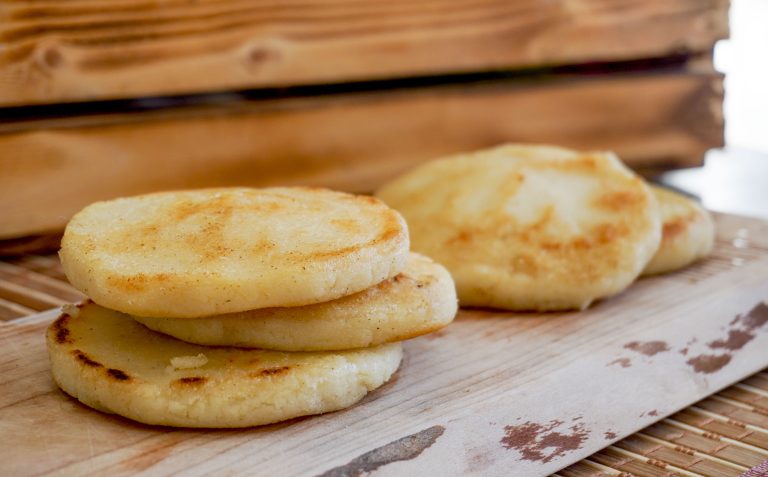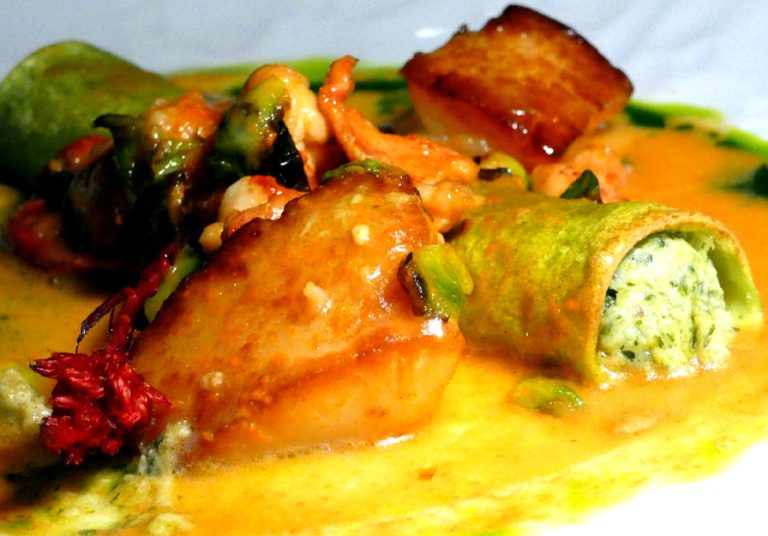Growing up in Colombia, arepas were a staple in my family’s diet. Versatile and easy to make, these tasty corn patties were an accompaniment to any meal of the day, or sometimes even a meal on their own.
Arepas are a culinary tradition in Venezuela and Colombia. There is a great variety of arepas in each country, with Colombia alone having more than 70 types.
What makes arepas so special and so enduring since pre-Columbian times? Let’s explore the world of Colombian arepas and learn a simple recipe to enjoy them at home.
What are arepas?
Arepas are flat, round patties made from corn. They are the Colombian and Venezuelan versions of the Mexican gorditas, the Salvadorian pupusas, the Caribbean casabes or the Chilean churrascas.According to a 2016 study, seven out of 10 Colombians eat arepas for breakfast. The corn patties ranked third among the most consumed foods in the country, after eggs and bread.
Traditionally, arepas were made from soaked corn kernels that were boiled and ground to knead the dough. Nowadays, the arepa-making process has been simplified after the invention of pre-cooked arepa flour, which instantly turns into dough by adding water.
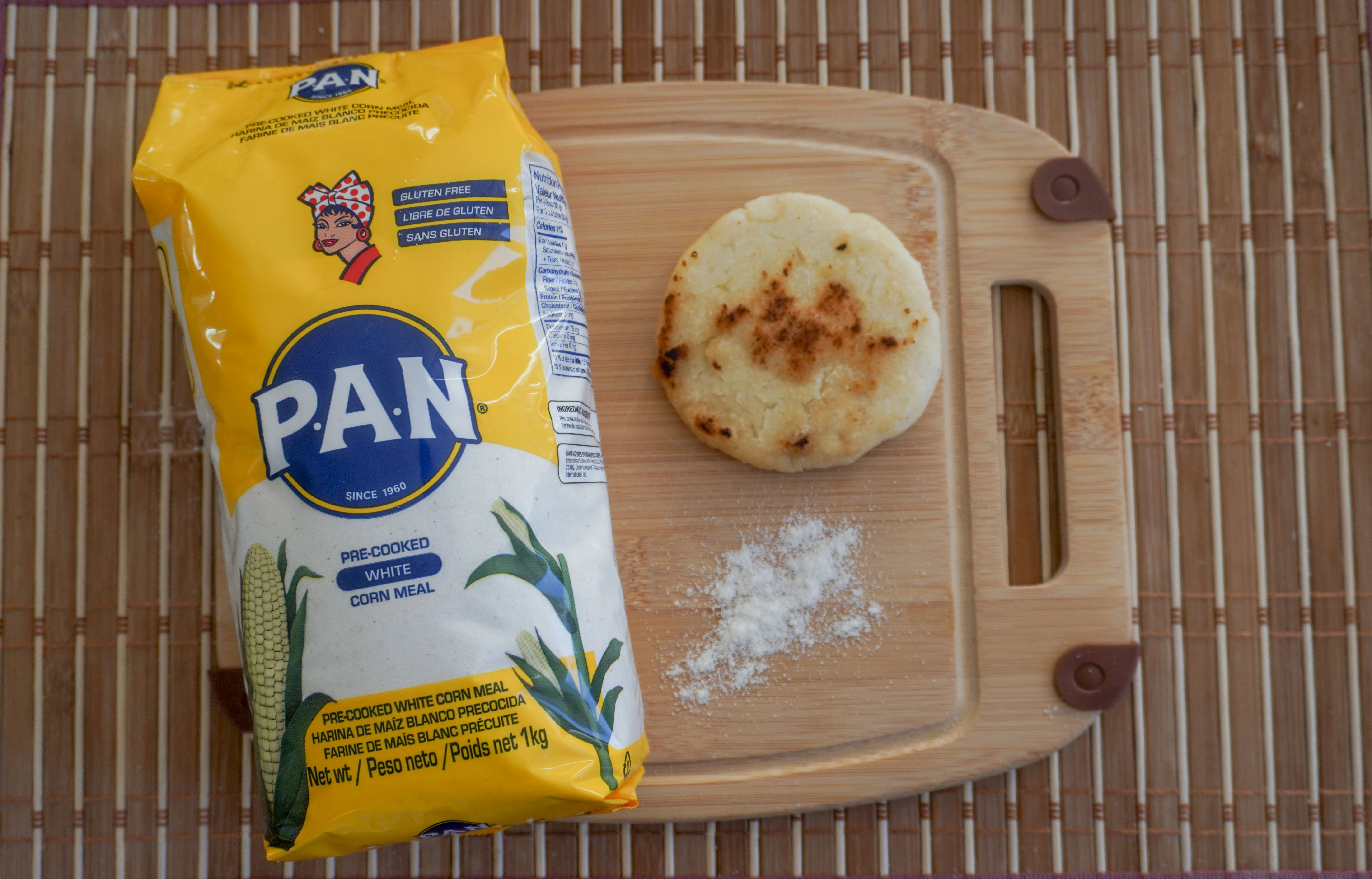
Success
You are now signed up for our newsletter
Success
Check your email to complete sign up
It’s common for arepas to be topped with butter or cheese or be filled with ingredients such as meat and vegetables – or even more cheese! They can be baked, roasted, grilled, pan-fried or fried.
A pre-columbian tradition
The oldest record of the preparation of arepas dates back to 3,000 years ago, when, according to archeological findings of instruments for their preparation, the indigenous people of Colombia, particularly the Muisca people, consumed it as part of their daily diet.
The invention and popularity of this recipe was largely due to the abundant cultivation of corn in the area, which began 6,000 years ago. The role of corn in the survival of the people earned it the status of divine gift in indigenous spirituality.
Arepas were one of the aboriginal traditions that remained intact after the arrival of the Spaniards. Traditionally prepared by women, the corn patties also won the heart of Spanish conquistadors.
Before passing away in 1554, Pedro Cieza de León, a Spanish chronicler, reported the consumption of arepas in Cartagena, a city in the northern coast of Colombia:
“Among these Indians of whom I am speaking, and in their villages, the best and tastiest corn bread is made in this land, so tasty and well kneaded that it is better than some of the wheat bread that is considered good.”
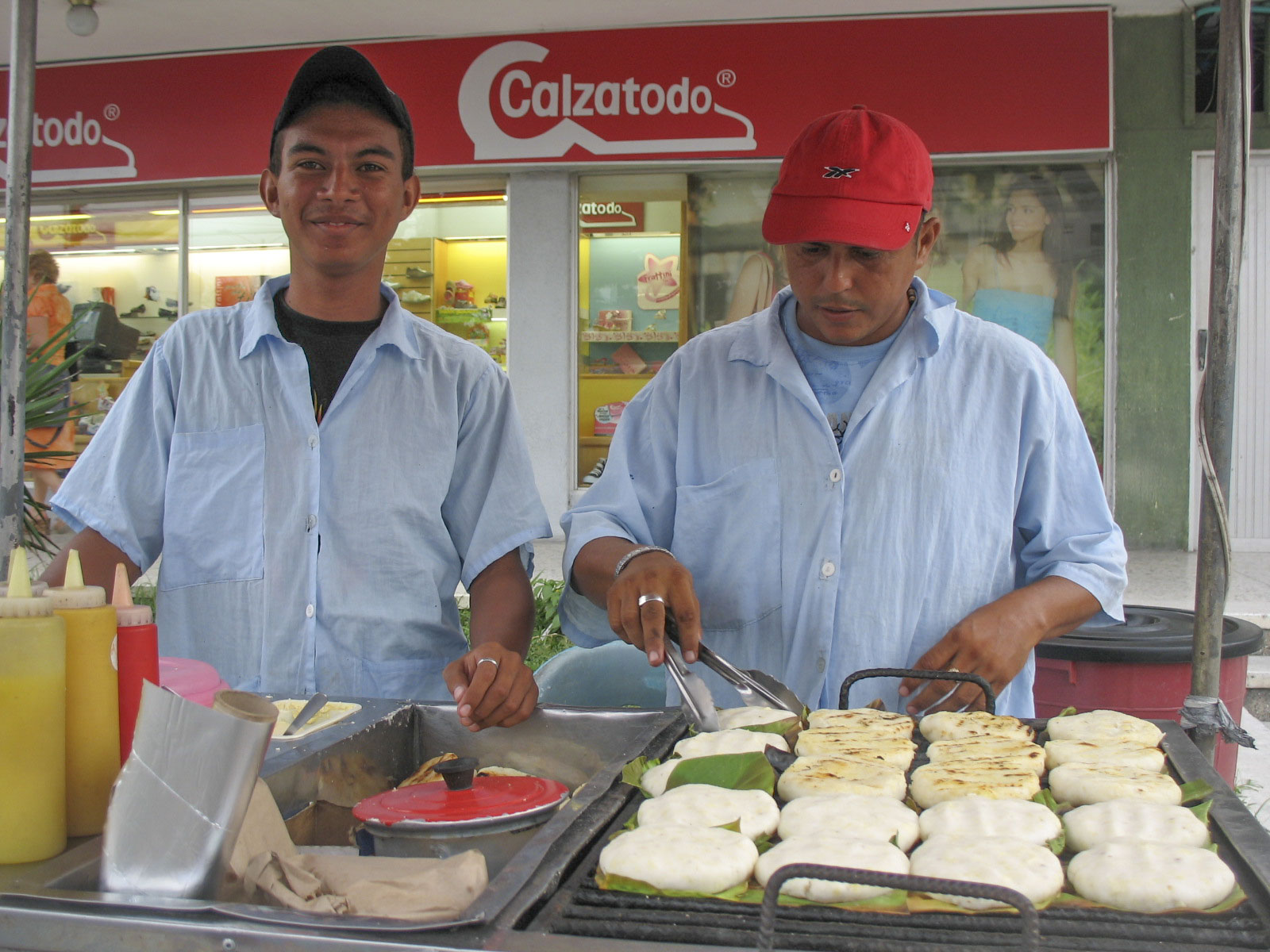
The Swedish traveler Carl August Gosselman, who explored Colombia in the 19th century, made reference to the consumption of arepas in the northwestern city of Medellín in his book Trip through Colombia 1825-1826:
“What is most abundant [in the Medellín market] is corn, the basis of food, which is sold in the form of arepas, thick cookies of very good flavor, healthy and somewhat more nutritious than bread […] Today, rich and poor eat with pleasure the tasty arepas.”
Six delicious Colombian arepas
Arepa flour can be white or yellow. Both types are equally nutritious and their flavor is almost identical. The choice is a matter of preference.
Arepa de queso (cheese arepa)
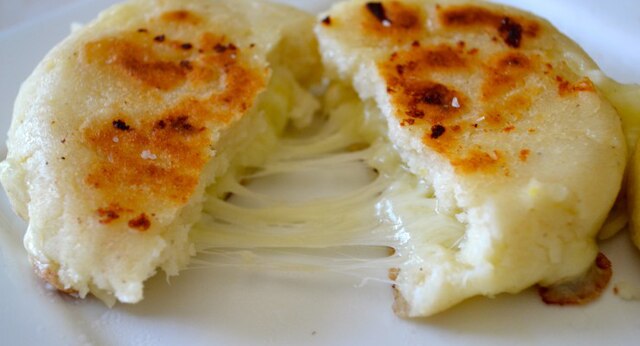
One of the most common arepas in the country, arepa de queso is rich in flavor. This arepa is filled or covered – or both! – with creamy cheese, such as mozzarella, and requires the addition of only three ingredients to the corn flour to create the dough: water, salt and butter.
A good cheese arepa releases gooey, stretchy cheese when cut open. Often a little extra butter is spread on top to enhance its taste.
Arepa de choclo (baby corn arepa)

Sweet and spongy, arepa de choclo is a classic. This yellow corn arepa is made with fresh corn kernels, milk, butter, sugar and a pinch of salt, resulting in a predominantly sweet flavor that is balanced – and complemented – by the savory taste of fresh cheese.
The word “choclo” comes from the Quechuan indigenous term for baby corn, which is naturally sweet and tender. If you have a sweet tooth, this is the arepa for you!
Arepa paisa
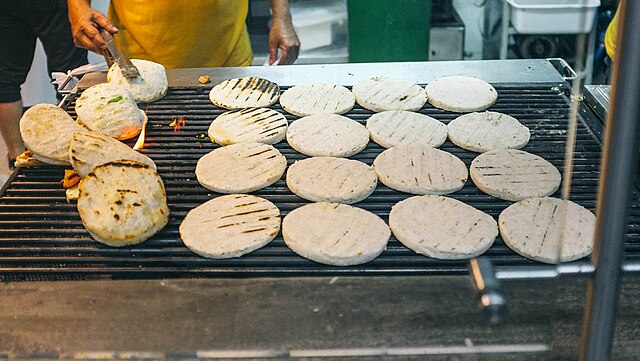
The simplest of all arepas, arepa paisa goes well with almost anything. It is thin, usually grilled and has only two ingredients: corn and water.
When served, it can be customized by spreading it with butter and sprinkling it with a little salt. It usually accompanies flavorful foods such as chorizo, beans, hogao – a traditional Colombian sauce made with tomato, onion, garlic, cilantro and spices – and meat.
“Paisa” is a word used to refer to the people of the Colombian department of Antioquia. As this arepa is originally from there, it deservedly shares this denomination.
Arepa boyacense
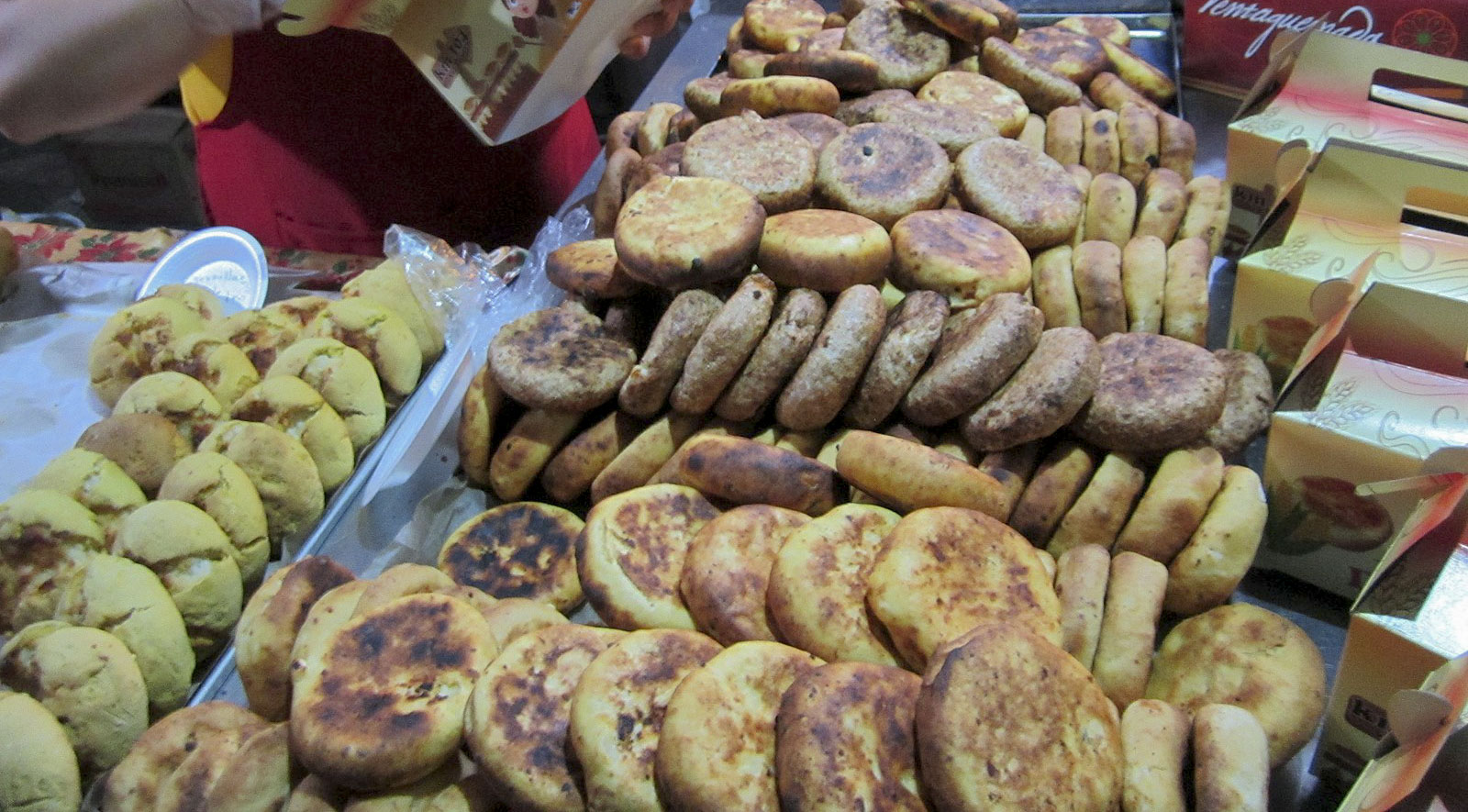
This small arepa is an unparalleled delicacy originating from the Colombian department of Boyacá, in the middle of the eastern ranges of the Andes mountains.
Made of yellow corn, this arepa is filled with queso fresco – a soft, easy to crumble, tangy white cheese – or cuajada (milk curd). The dough requires more ingredients than its counterparts, such as butter, milk, panela (unrefined whole cane sugar), plain flour, sugar and salt.
The perfect combination of sweet and salty in this arepa makes it a national favorite.
Arepa de huevo (egg arepa)

Typical of the Colombian Caribbean coast, this arepa is fried and filled exclusively with eggs.
There is a technique to preparing this arepa; it must first undergo a frying step before a careful cut is made to pour a raw egg inside. Then, it is fried again, until the egg is thoroughly cooked.
Arepa rellena (stuffed arepas)

Arepas rellenas can be an appetizer or a meal. These arepas are usually unsalted – like arepa paisa – because their filling carries most of the flavor. Common filling ingredients include chicken, beef, avocado, eggs, cheese and Colombian creole sauce.
They are a staple food in several cities of the country, and their recipe varies according to preferences and creativity.
Making cheese arepas at home – easy recipe
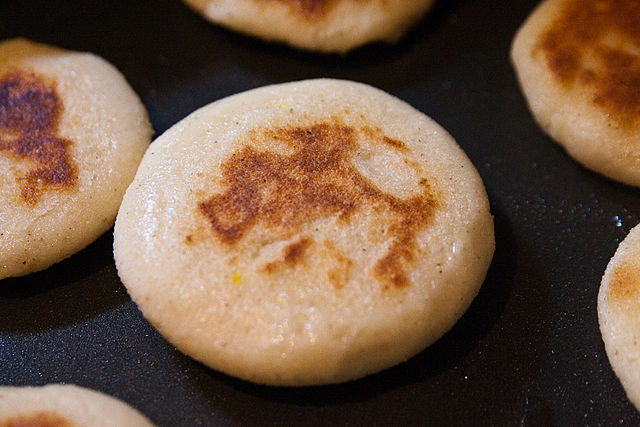
Yields: 6 arepas
Ingredients:
- 2 cups pre-cooked arepa flour
- 2 cups lukewarm water
- ½ tsp salt (or to taste)
- 2 tbsp soft butter
- Shredded mozzarella cheese (to taste)
Instructions:
- In a bowl, add the arepa flour, salt, butter and water. Mix and knead until a uniform dough is obtained (about 3 min).
- Form the dough into six equal balls.
- Take each ball and make an indentation in the center with your fingers. Fill it with cheese and bring the edges of the arepa together, encasing the cheese inside.
- Gently press the ball between the palms of your hands, shaping it into a disk about ½ inch thick.
- In a pan over medium heat, melt butter and cook the arepas for about 3 minutes on each side until golden brown – little burnt spots are fine.
- Serve immediately and enjoy with a traditional Colombian hot chocolate!
¡Buen provecho!



